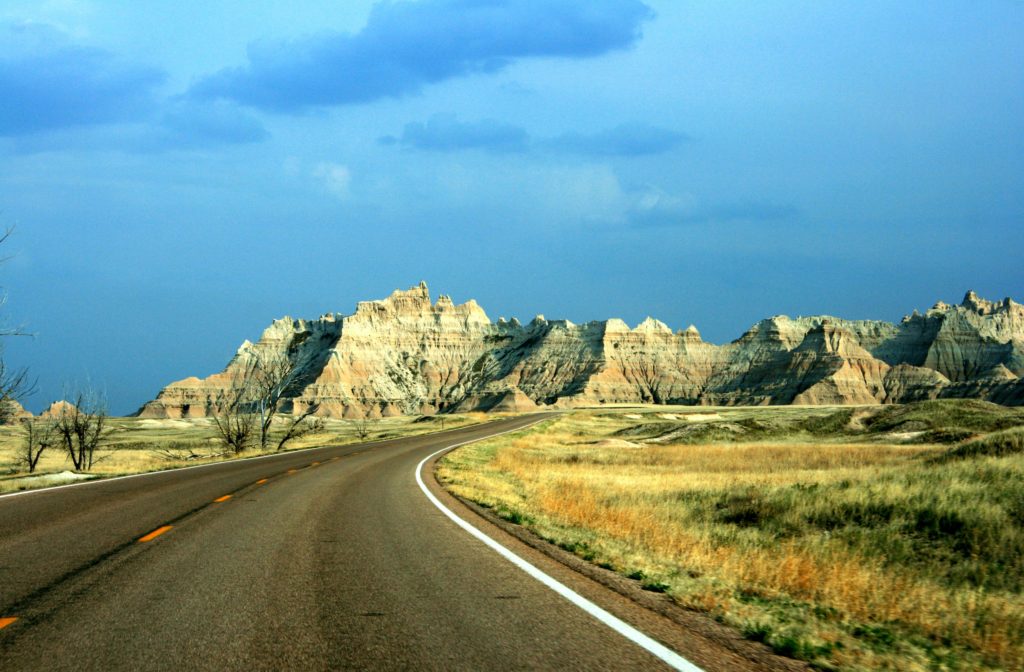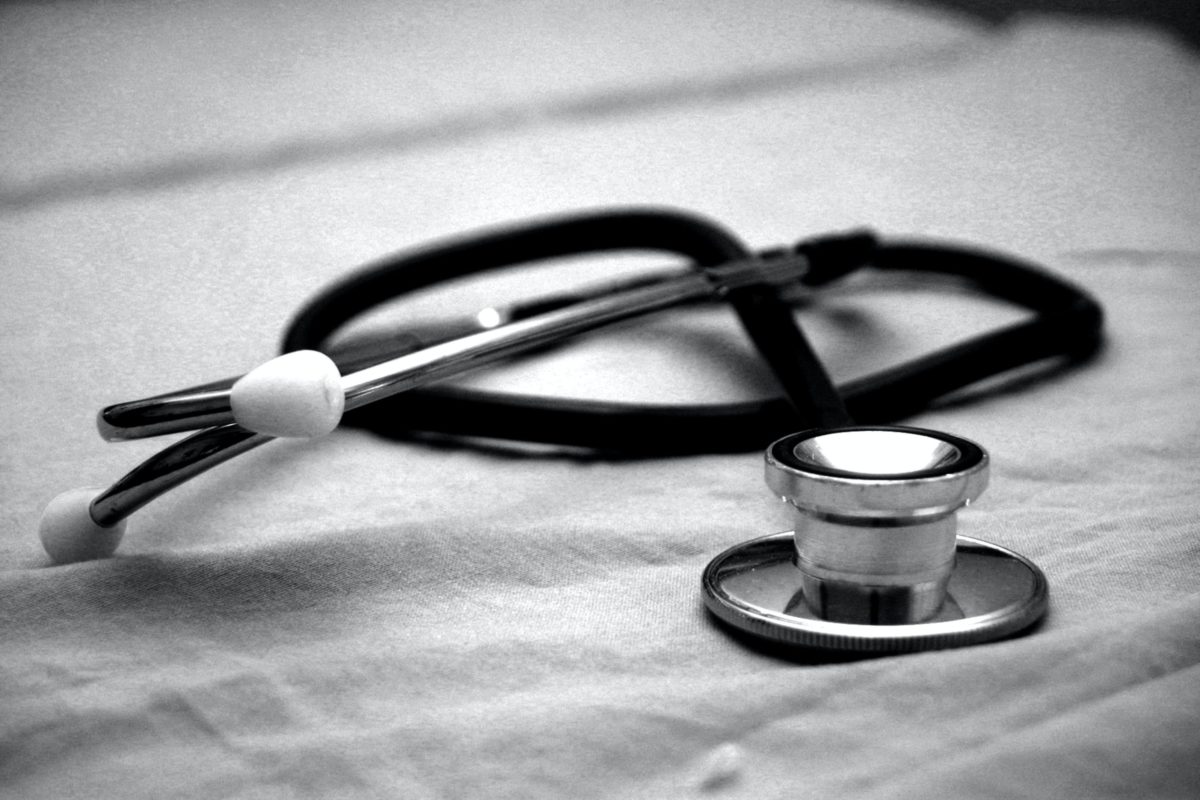Through the Contemporary Concerns in Medicine course, we have learned about flaws in the United States healthcare system and have determined that current policies do not provide high quality care for all people. One particular group that receives inadequate healthcare is Americans living in rural regions of the country. Among the worst off are Native Americans living on reservations.
In high school, I traveled to Pine Ridge, South Dakota, one of the largest of the 326 Native American reservations on US territory (Indian Affairs (IA)). This was an immersive trip and part of my high school’s effort to educate students on disadvantaged communities within the United States. In learning about the conditions on the reservation, I was most surprised to learn about the poor healthcare available on the reservation and the diminished healthcare outcomes for Native Americans living on the reservation. Taking both the knowledge I learned from my travels to Pine Ridge, and our discussions on disparities in the U.S. healthcare system in this class, it is clear that the Pine Ridge reservation is an example of how the US healthcare system does not support all people living in this country.

The Pine Ridge Reservation was established in 1889, encompasses 2.1 million acres of southwest South Dakota, and is located near Rapid City, South Dakota and Badlands National Park (Strickland). Roughly 18,000 people live on the reservation with the majority of residents identifying as part of the Oglala Lakota Native American tribe who consider the Black Hills of South Dakota their ancestral lands (Pine Ridge Indian Reservation Facts | Re-Member). People living on Pine Ridge have some of the worst health and are among America’s poorest with a per capita income of $8,768. Life expectancy on the reservation is the lowest in the entire U.S. with women having a life expectancy of 52 years and men having a life expectancy of 48 years (Shift). 89% of people on the reservation are unemployed, and a reported 53.75% live in poverty, and some estimate the poverty rate to exceed 80% (Pine Ridge Indian Reservation Facts | Re-Member). Additionally, Native Americans on Pine Ridge see an excess of tuberculosis, infant mortality, suicide, alcoholism, cervical cancer, diabetes, car crashes, and unintended injuries (Shift). Further, very few hospitals exist on the reservation and within the surrounding area, meaning residents have to travel great distances for care. Only one true hospital exists on the entire 2.1 million acre reservation which is the Pine Ridge Hospital. Despite being responsible for a population of 18,000 people, this hospital has only 45 beds and 16 physicians (Pine Ridge Service Unit | Healthcare Facilities). The available care is still significantly worse than care received at other hospitals. In 2017, the Centers for Medicare and Medicaid Services ended the provider agreement with Pine Ridge Hospital, preventing the hospital from being able to bill Medicare for services. This decision was made due to reports of misdiagnoses and inadequate care that put patients at risk for “imminent injury, serious harm, death or impairment” (Abourezk). The combined effects of extreme poverty and limited access to adequate care causes Native Americans on Pine Ridge experience extremely poor health.
Disparities in healthcare are caused and exacerbated by a variety of factors, including a lack of access to insurance, inability to afford medical care due to cost-sharing, geographic barriers, illness-based disparities, and institutional racism (Dickman et al). All of these issues can be seen on the Pine Ridge reservation and contribute to the decreased health outcomes for Native Americans. At present, the US has no national health care plan, and healthcare is primarily tied to employment (Shmerling). For the people in Pine Ridge, 89% of people are unemployed, meaning most do not have reliable health insurance or must rely on Medicaid for insurance. Even for those who are insured or qualify for Medicaid, cost-sharing and out of pocket costs for specialty services can be expensive and not feasible for the many residents of Pine Ridge who live in poverty. As is common with healthcare in many rural regions, Pine Ridge has extremely few healthcare facilities, and aside from the Pine Ridge hospital, there are only two other facilities on the reservation with limited providers and services (Pine Ridge Service Unit | Healthcare Facilities).
Roland left the reservation for the first time in his life in April, when he was airlifted to a hospital in Rapid City for an emergency surgery after he slipped in the snow and shattered his hip while chopping firewood. Only able to move with the help of a walker, Roland, who wears a dirt-covered jacket and repeatedly pulls up his oversized jeans as they sag from his waist, says he will never be able to pay the $2,000 in medical bills through the small amounts of cash he gets doing odd jobs for neighbors and ranchers.
Strickland
Additionally, several of the illnesses plaguing Pine Ridge residents such as substance abuse and mental health conditions are not adequately treated for and exhibit illness-based disparities. With limited health centers and practicing physicians, treatment for psychiatric care is limited in Pine Ridge despite the widespread incidence of mental health conditions and substance abuse among residents. Psychiatric care is oftentimes an out of pocket cost not covered by insurance plans, meaning low income families may not be able to afford these services (Dickman et al). Systemic racism also affects Native Americans on reservations. During the U.S. westward expansion, Native Americans were forcibly removed from their ancestral land and placed on reservations. Beyond this, Native American communities have experienced massive injustice, including massacres such as the 1889 Wounded Knee massacre at Pine Ridge and placement in conversion schools. For decades, the U.S. government did not provide healthcare to Native Americans despite stipulations in reservation treaties dictating the government must provide for these needs. This history of oppression has placed them at an economic disadvantage, and to this day federal programs and infrastructure on reservations are underfunded and underdeveloped. These systemic issues have direct effects on the health of Native American people (Ferguson and Solomon et al).
The present-day poverty gripping many indigenous communities – on and off reservations – is firmly rooted in the historical laundry list of massacres, ethnic cleansing, land theft and broken treaties endured by indigenous people in North America.
Strickland
Native Americans experience significant problems in accessing healthcare and experience worse health outcomes than the majority of people living in the United States. This is a serious injustice that contributes to massive suffering among Native American communities and must be addressed. Many initiatives from well-known organizations are in progress to address the social determinants of health that apply to rural communities such as efforts by the Association of American Medical Colleges to educate new physicians on healthcare in rural regions and how to treat patients in rural areas. Additionally, the US Department of Health and Human Services included rurality as a social factor that affects health in its report to Congress to inform Medicare purchasing programs (Social Determinants of Health for Rural People Overview – Rural Health Information Hub). However, in discussing the issue of health disparities in rural communities, the significant disadvantages that Native Americans face are lumped together with the larger issue of inadequate rural healthcare. There is a lack of awareness and understanding of the considerations specific to Native American reservations, especially with respect to healthcare.
The problem of healthcare on reservations is vastly complicated, involves the interplay of economic and social factors, and is rooted in historic mistreatment of the Native American community. In my opinion, a critical first step in rectifying healthcare disparities is increasing the number of practicing physicians on reservations. This could be accomplished by incentivizing physicians to work in Pine Ridge or by encouraging and providing access for community members to gain an education to become a physician. Additional work could be done in expanding insurance coverage and in tackling extreme poverty occurring on the reservation.
Severe mistreatment of Native Americans is a part of U.S. history that is not always acknowledged, but still impacts their community today. Healthcare is a basic human right, and the fact that Native Americans experience barriers in accessing health care due to their initial displacement in the 1800s is disheartening and adequately addressed. It is important to continue educating people about this issue to reach any progress and improve conditions for these communities who called U.S. territory home well before the majority of Americans.

- References:
- Abourezk, Kevin. “Another Indian Health Service Hospital Placed in ‘immediate Jeopardy’ Status.” Indianz, 6 Nov. 2017, www.indianz.com/News/2017/11/06/another-indian-health-service-hospital-p.asp.
- Dickman, Samuel, et al. “Inequality and the Health-care System in the USA.” The Lancet, vol. 389, no. 10077, Elsevier BV, Apr. 2017, pp. 1431–41. https://doi.org/10.1016/s0140-6736(17)30398-7.
- Ferguson, Dana. “Violated: Inside South Dakota’s Native American Health Care Crisis.” Argus Leader, 5 Dec. 2018, www.argusleader.com/story/news/2018/12/05/south-dakota-ihs-indian-health-service-history-native-american-healthcare-crisis/2128151002.
- Indian Affairs (IA). “Frequently Asked Questions | Indian Affairs.” Indian Affairs (IA), www.bia.gov/frequently-asked-questions#:~:text=There%20are%20approximately%20326%20Indian,%2C%20communities%2C%20etc.
- “Pine Ridge Indian Reservation Facts | Re-Member.” Re-Member, www.re-member.org/pine-ridge-reservation.
- “Pine Ridge Service Unit | Healthcare Facilities.” Great Plains Area, www.ihs.gov/greatplains/healthcarefacilities/pineridge.
- Shift. “What Led to Health Disparities for Native Americans on the Pine Ridge Reservation — and What Can Nurses Do About Them? – SHIFT.” SHIFT, 10 Aug. 2022, www.shiftnursing.com/articles/pine-ridge-reservation.
- Shmerling, Robert H., MD. “Is Our Healthcare System Broken?” Harvard Health, 13 July 2021, www.health.harvard.edu/blog/is-our-healthcare-system-broken-202107132542.
- Social Determinants of Health for Rural People Overview – Rural Health Information Hub. www.ruralhealthinfo.org/topics/social-determinants-of-health#address-issues.
- Solomon, Danyelle, et al. “Systemic Inequality: Displacement, Exclusion, and Segregation – Center for American Progress.” Center for American Progress, 14 Feb. 2023, www.americanprogress.org/article/systemic-inequality-displacement-exclusion-segregation.
- Strickland, Patrick. “Life on the Pine Ridge Native American Reservation.” Human Rights | Al Jazeera, 2 Nov. 2016, www.aljazeera.com/features/2016/11/2/life-on-the-pine-ridge-native-american-reservation
